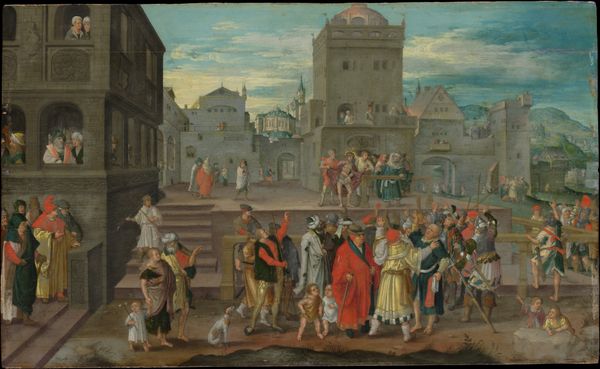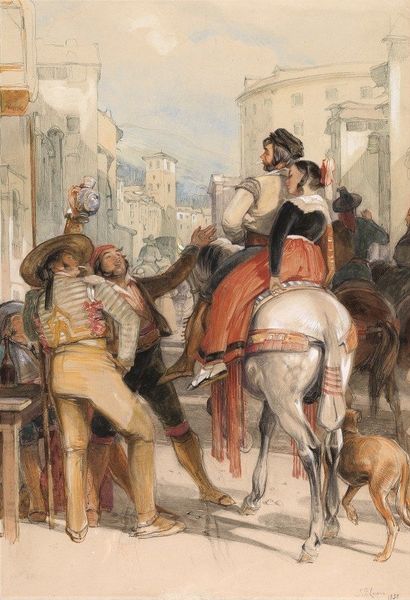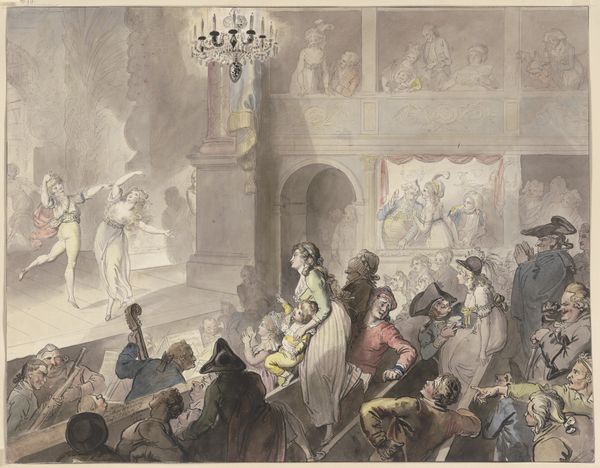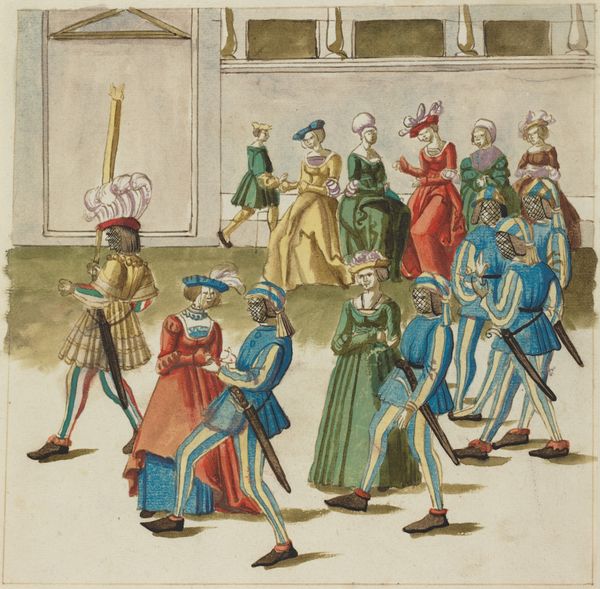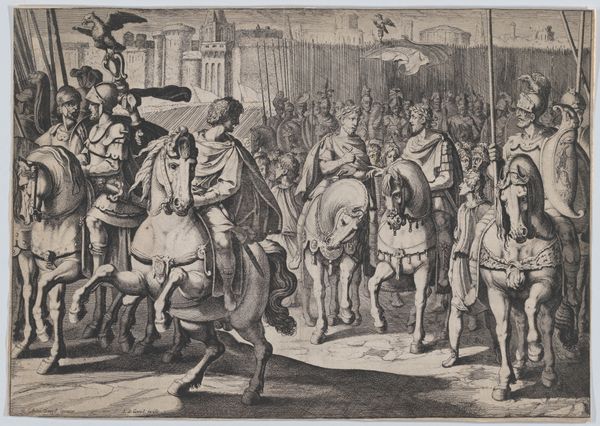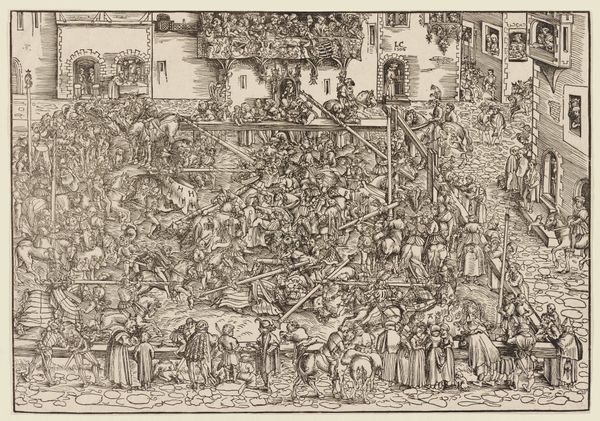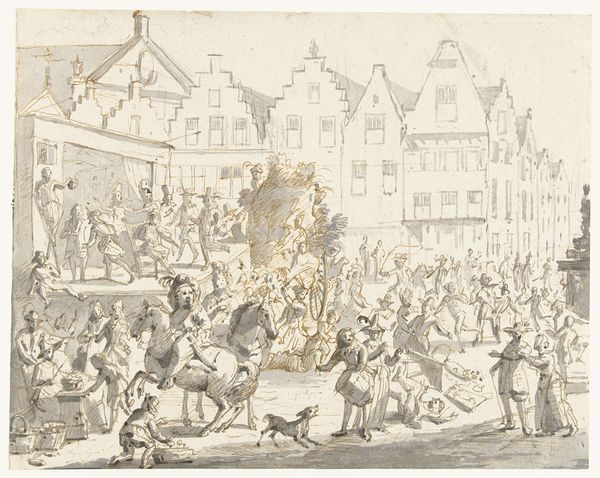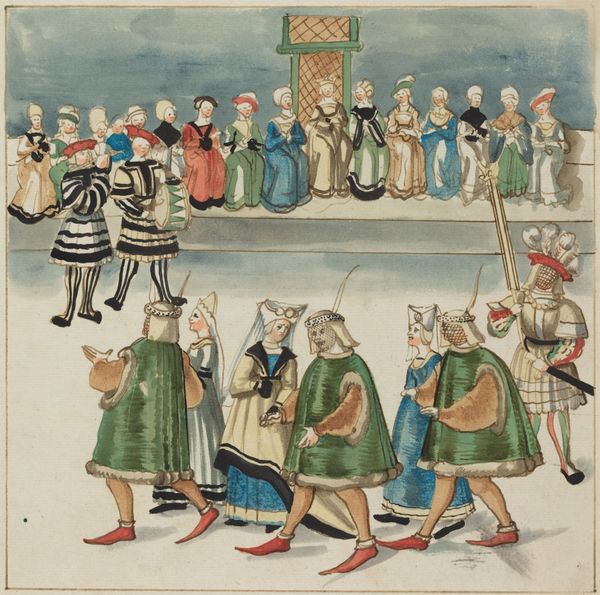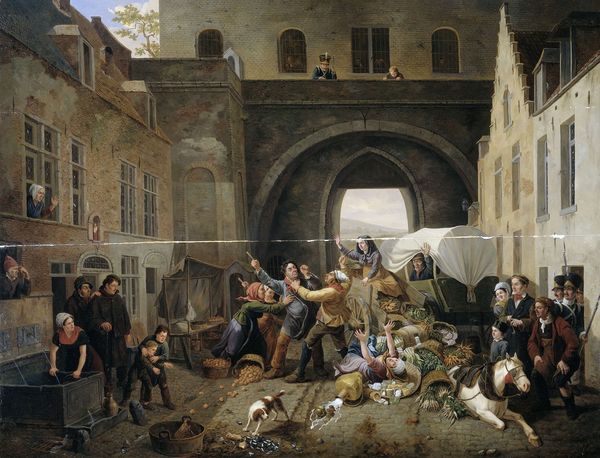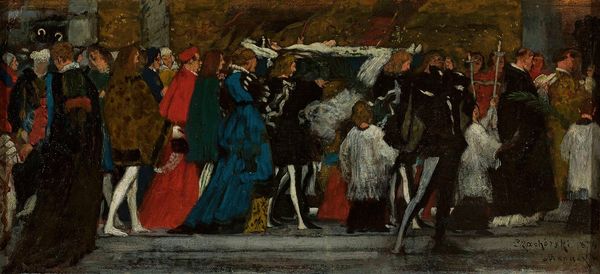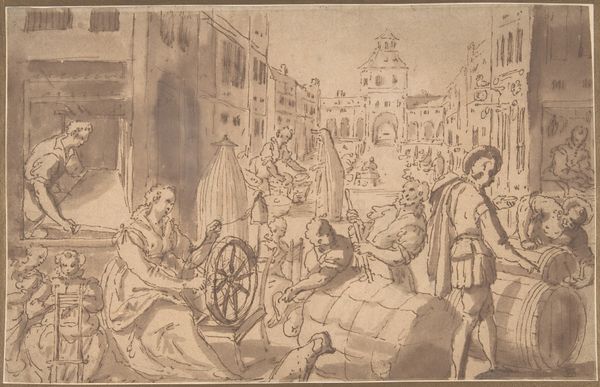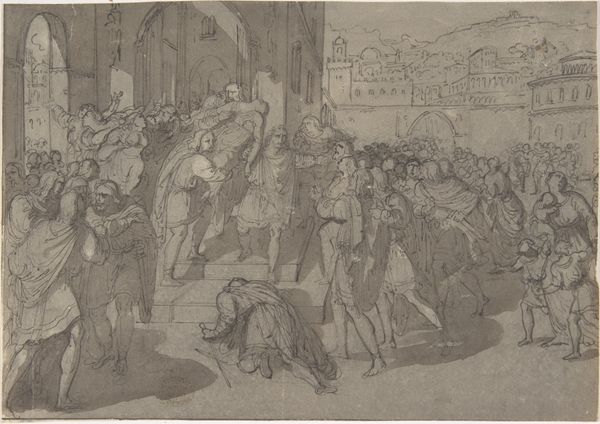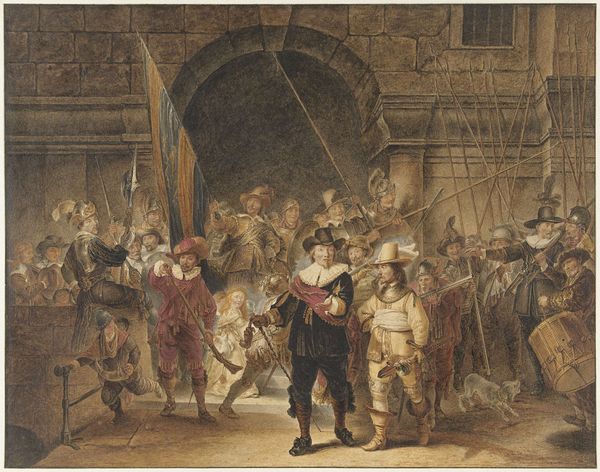
oil-paint
#
portrait
#
16_19th-century
#
animal
#
oil-paint
#
figuration
#
oil painting
#
romanticism
#
cityscape
#
genre-painting
#
history-painting
Dimensions: 90.5 x 118.9 cm
Copyright: Public Domain
Curator: Let's turn our attention to Franz Pforr's depiction of *The Entry of King Rudolf of Habsburg into Basel in 1273*. Pforr painted this historical scene between 1808 and 1810. Editor: It strikes me immediately as rather restrained. There is pageantry, but rendered in subdued hues; almost like a memory viewed through layers of time. Curator: Precisely! It is Romanticism tempered by the artist's reflection on German medieval history and identity. This moment, Rudolf's arrival, signifies the re-establishment of imperial authority. What we are seeing here is not just an entry, but the performative enactment of power relations. Editor: I notice the artist’s attention to detail—the textures of the fabrics, the glint of the armor. It's meticulous. What does that say about Pforr's aesthetic agenda here? Curator: Consider the burgeoning sense of German nationalism during the Napoleonic era when it was created. Pforr idealizes the past and Rudolf becomes a figurehead. In his construction, Rudolf embodies justice, strength, and the promise of German unification. The very specific costuming helps create that aura. Editor: Yet the crowd seems almost detached; there is an odd distancing effect produced by the perspective. What purpose might that flattening serve? Curator: He’s capturing a foundational myth. It’s less about the people involved than about solidifying this particular telling of German history for contemporary viewers. Everyone is playing a prescribed role. Gender also comes into play as we see women relegated to observing from windows above, separate and distinct. Editor: That contextual insight deepens the experience of observing the artwork. Suddenly it isn't merely about an historical entry into a city, but speaks of societal hierarchy, too. Curator: Agreed. When we engage in a dialogue with artworks across time we begin to better understand our present. Editor: Yes, there’s so much depth woven into Pforr's artistic approach that only attentive viewing can extract, piece by piece.
Comments
stadelmuseum almost 2 years ago
⋮
Intentionally clad in a plain grey garment and a black beret, Rudolf von Habsburg rides into the city of Basel with his opulent entourage. He had been elected emperor in Frankfurt a short while previously. In a rigorous, flat composition and with brilliant local colours, this is the Nazarene Pforr's idealised version of the Middle Ages, "where the dignity of man can still be seen in all its strength". Inspired by Old German and Italian Gothic and Early Renaissance art, Pforr dreamed of a patriotic form of painting which would help to revive the spirit of the German nation.
Join the conversation
Join millions of artists and users on Artera today and experience the ultimate creative platform.
